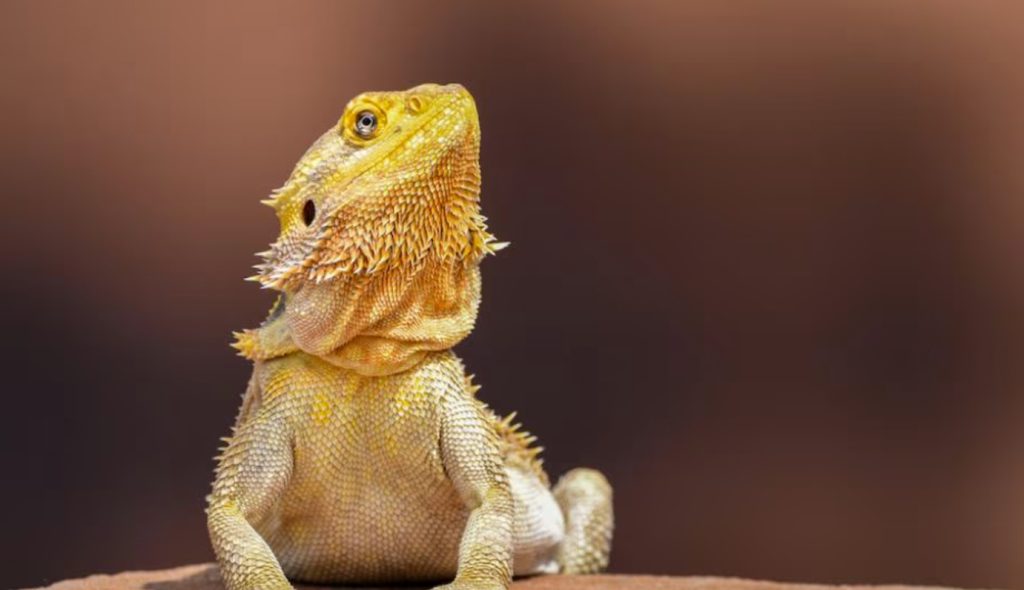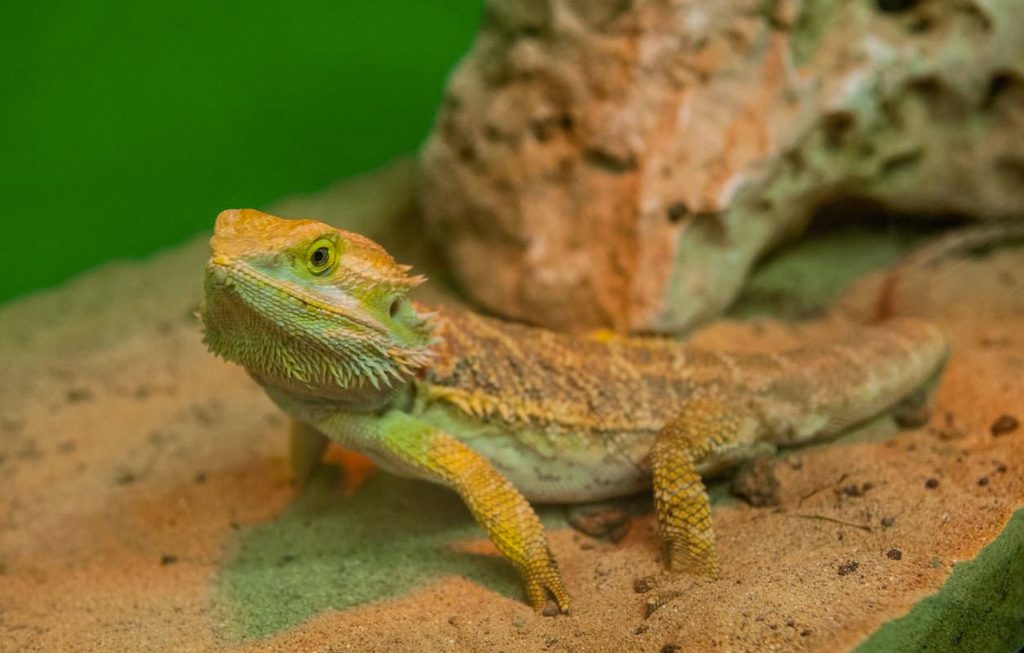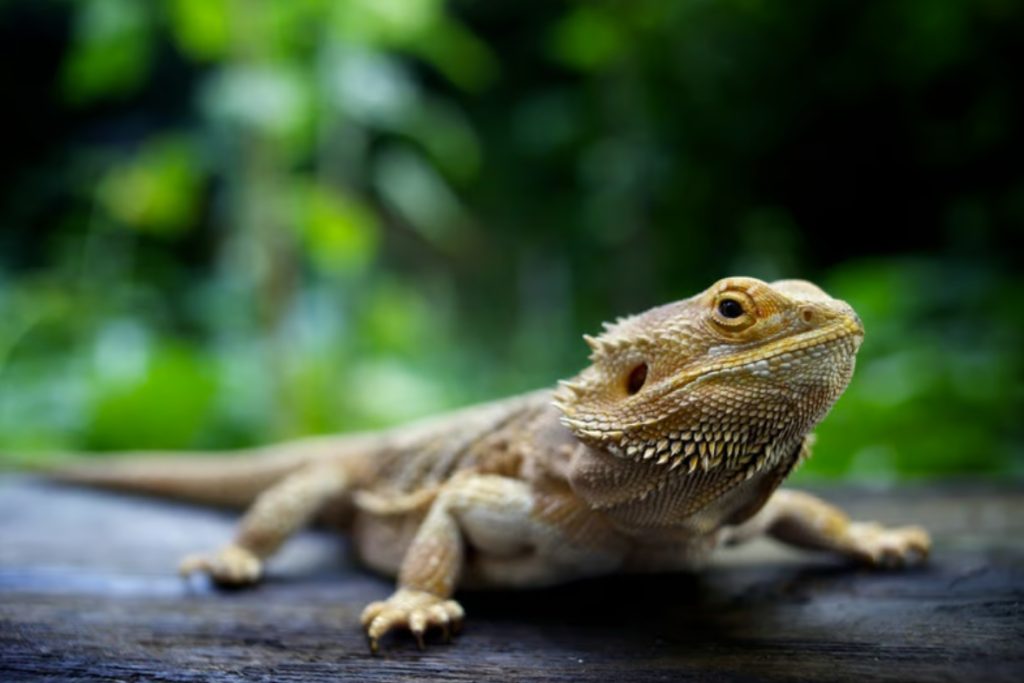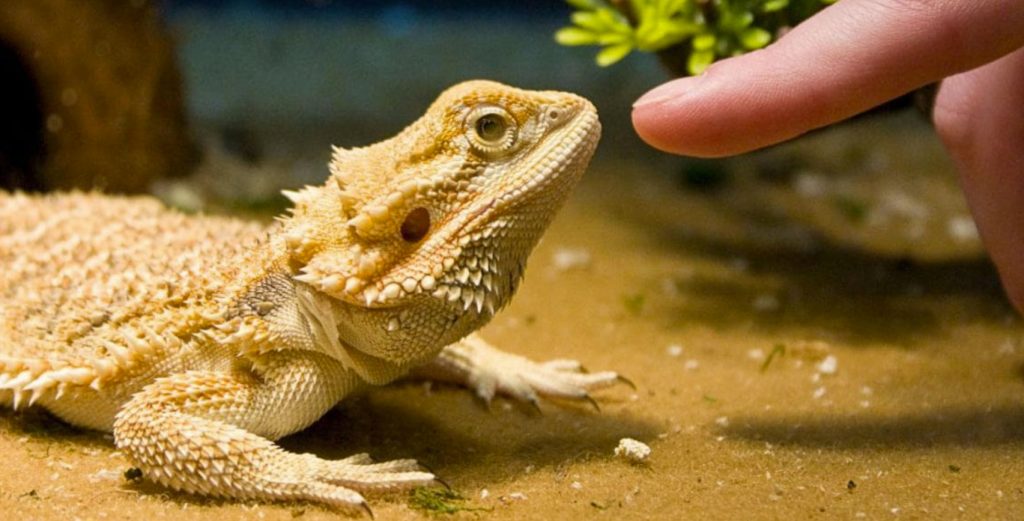Native to central Australia, bearded dragons are among the most popular pet lizard species. They are affectionately nicknamed “beardies” by reptile enthusiasts.
Bearded dragons get their name from a natural defense mechanism. When feeling threatened, they can flare out the skin beneath their chin, which darkens in color to resemble a beard.

All reptiles can carry infectious diseases, including Salmonella bacteria, which is transmittable to humans. It is important to always wash hands before and after handling a bearded dragon or any items from its habitat.
Tank Size
A juvenile bearded dragon requires a tank that is at least 20 gallons or larger. As they grow, the enclosure size should increase to accommodate their needs. All tanks should have a screened lid for proper ventilation and to prevent escape.
With proper care and nutrition, bearded dragons reach adulthood within a year. A single adult bearded dragon should have a tank that is at least 40 gallons to allow enough space for movement and exercise. Providing the largest possible habitat is always recommended.
Temperature
A thermal gradient is essential in the enclosure, allowing the bearded dragon to regulate its body temperature. The warm end of the tank should be kept at 100°F, while the cooler end should remain around 75°F.

Temperature checks should be done daily. Two thermometers—one in the warm area and one in the cool area—should be placed in the enclosure for easy monitoring. A digital point-and-shoot thermometer can also provide instant readings.
Lighting
As ectotherms, bearded dragons rely on external heat sources to regulate their body temperature.
An incandescent light or ceramic heater should be placed at one end of the tank to create a basking area during the day. The required wattage depends on the enclosure size, bulb distance, and room temperature. Adjusting the wattage ensures the proper temperature gradient is maintained.
Humidity
Although bearded dragons originate from dry regions, they still require proper humidity levels for healthy skin and lung function.
The ideal humidity range for their habitat is 30% to 50%. If humidity levels drop too low, shedding difficulties may occur.
To increase humidity, mist the bearded dragon and its habitat decor regularly or add non-toxic live plants to the enclosure. To decrease humidity, ensure proper ventilation so humid air can escape. A hygrometer should be used to measure humidity levels daily.

Substrate
A substrate or reptile carpet should be placed at the bottom of the habitat. Materials such as gravel, wood chips, and walnut shells are not recommended, as they are indigestible and can cause gastrointestinal obstruction if ingested.
If a loose substrate like sand is used, the bearded dragon should be fed in a dish or a separate feeding tank to reduce the risk of accidental ingestion.
Hiding Areas
At least two hiding areas should be provided—one in the warm side of the enclosure and one in the cool side.
These spaces offer privacy and security while also allowing the bearded dragon to retreat from direct basking light when needed. However, if the bearded dragon spends excessive time in hiding areas, it may not be receiving enough UV exposure, which should be monitored.

Climbing Branches and Basking Rocks
At least one sturdy basking rock or climbing branch should be included in the habitat. These allow the bearded dragon to climb and bask during the day.
Basking branches must be stable and large enough to support the bearded dragon’s body. If unstable, they could topple over and cause injury.
By setting up a proper habitat with the right temperature, lighting, humidity, and enrichment, bearded dragons can thrive in a home environment.
